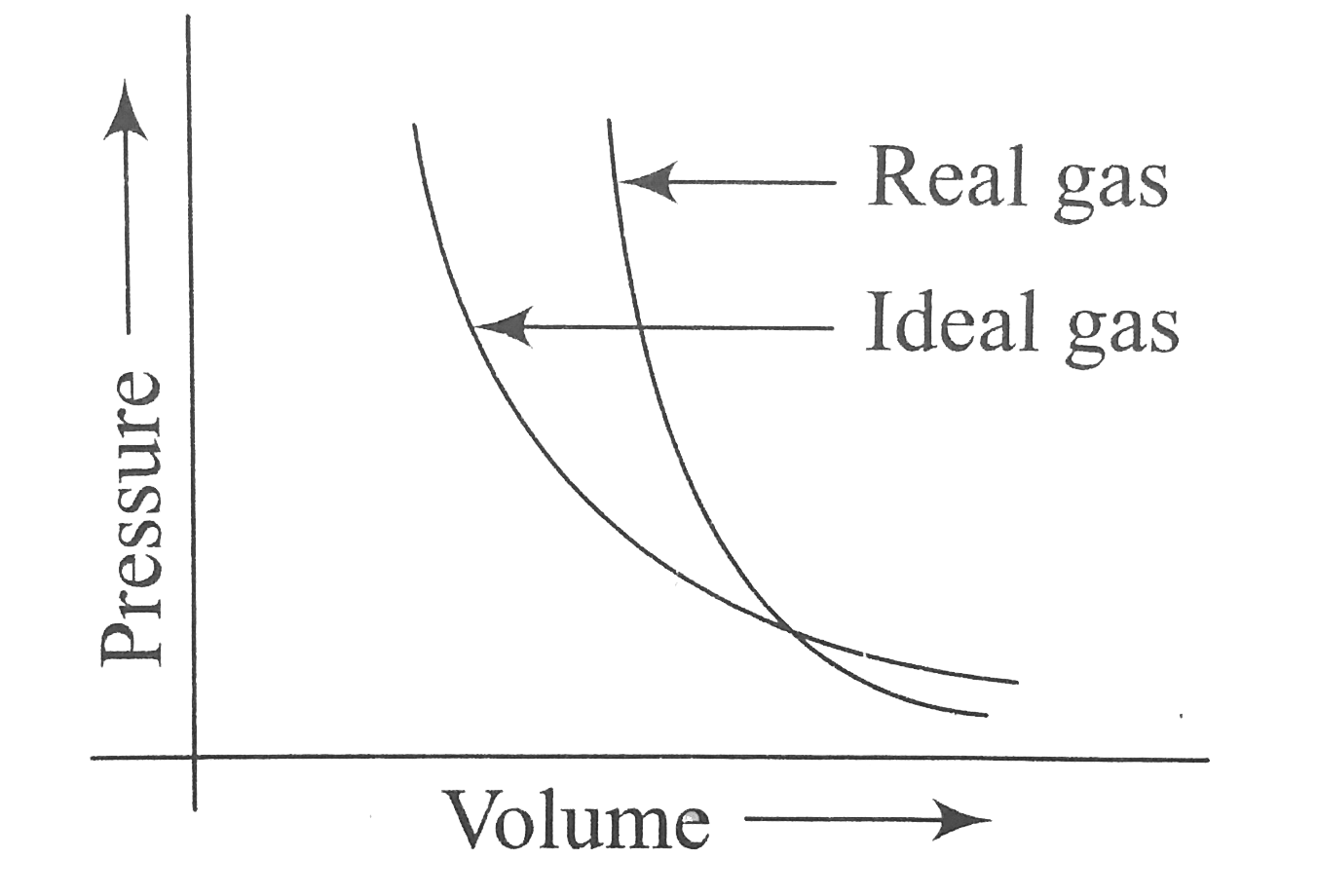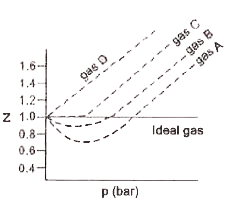Real gases do not follow the ideal gas equation perfectly under all conditions . They show deviation from the ideal behavior when
pressure is high and temperature is low
pressure is low and temperature is high
both pressure and temperature are high
both pressure and temperature are low
The correct Answer is:A
Real gases do not follow Boyle's law, Charles'law , and Avogadro's law perfectly under all conditions on account of intermolecular interactions which become significant when their molecules are quite close (due to high pressure) and are moving very slowly (due to low temperature). The deviation from ideal behavior becomes apparent when the pressure vs. volume plot is drawn.

It is apparent that at very high pressure, the measured volume for real gases is more than the calculated volume (from Boyle's law) for ideal gases. At low pressures, measured and calculated volumes approach each other.
The nonideal behavior(deviation from the predictions of the ideal gas laws) is most significant at high pressures and//or low temperatures, that is, near the conditions under which the gas liquefies.
Topper's Solved these Questions
- STATES OF MATTERBOOK - R SHARMACHAPTER - STATES OF MATTEREXERCISE - Follow -up Test 9
8 Videos
- STATES OF MATTERBOOK - R SHARMACHAPTER - STATES OF MATTEREXERCISE - Follow -up Test 10
15 Videos
- STATES OF MATTERBOOK - R SHARMACHAPTER - STATES OF MATTEREXERCISE - Follow -up Test 7
13 Videos
- SOME BASIC CONCEPTS OF CHEMISTRYBOOK - R SHARMACHAPTER - SOME BASIC CONCEPTS OF CHEMISTRYEXERCISE - Archives
26 Videos
- STRUCTURE OF ATOMBOOK - R SHARMACHAPTER - STRUCTURE OF ATOMEXERCISE - ARCHIVES
55 Videos
Similar Questions
The real gases show deviations from ideal gas behaviour. It is observed that real gases donot follow Boyle's law, Charles law and Avogadro law perfectly under all conditions. The deviations from ideal behaviour can be measured in terms of compressiblity factor Z.
what is meant by the term Compressiblity ? (b) What is the value of Compressibility factor for ideal gases and real gases ?
View SolutionUnder what conditions to gases show maximum deviations from ideal gas behaviour ?
View Solution
Knowledge Check
Real gases do not obey ideal gas equation,
Aat low temperatureBat low pressuresCat high pressureDat high temperatureReal gases show deviation from ideal behaviour at low temperature and high pressure.
Atemperature is low and pressure is highBtemperature si high and Pressure is lowCboth temperature and pressure are lowDboth temperature and pressure are highThe real gases show deviation from ideal gases donot follow Boyle's law, Charles law and Avogadro law perfectly under all conditions. The deviations from ideal behaviour can be measured in terms of compressibility factor, Z which may be defined as :
Z=pVnRT
It has been observed that Z has values greater than and less than one for different gases. The behaviour of some common gases is shown here.

If Vo is the observed volume of a gas and Vi is the ideal gas volume, then Z isAVo−ViBVo/ViCVi/VoDVi−Vo
Why do the gases at low temperature and high pressure show large deviations from ideal behaviour ?
View SolutionIdeal gas equation strictly obeys gas laws under all conditions of
View SolutionWhen does a gas deviate the most from its ideal behavior?
View SolutionAny gas shows maximum deviation from ideal gas behaviour at
View SolutionWhen does a gas deviate the most from its ideal behavior?
View Solution
